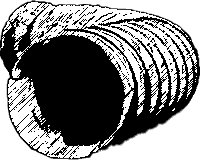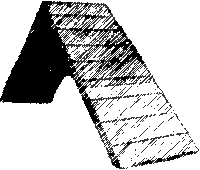 | |
Deaf Dog Education Action Fund |
| Home | | | FAQs | | | Training | | | | | Rescue | | | You Can Help |
Heather & Robin's Tips
- Agility Tips From ...
- Heather and Robin
- Brenda and Frankie
Heather Gates and her Jack Russell Terrier,
Falling Branch Robin MAD, RM, SCH-B, JM, EAC, EJC, OGC, CL3, AGII, AGI
For a list of what all these letters stand for, see Agility Ability - Titles
Robin is my second Jack Russell Terrier and Agility dog, but my first deaf dog. She was born April 27, 1997 and came to me from her breeder, a friend, at age 14 weeks. Pick of the carefully bred litter, her breeders were devastated to learn she was deaf at five weeks of age. They wanted a home for her with an older, male terrier. My Wishbone fit their order for a big brother, and we were thrilled to have Robin in our home.
 I grew up with a blind Cocker Spaniel, so my first thoughts were that a deaf dog would be a challenge, but it never entered my mind that she would be abnormal in any way. It never occurred to me that she couldn't do all the fun things her big brother did, like JRT racing, go-to-ground, and that fun thing we recently discovered at a terrier fun day - Agility.
I grew up with a blind Cocker Spaniel, so my first thoughts were that a deaf dog would be a challenge, but it never entered my mind that she would be abnormal in any way. It never occurred to me that she couldn't do all the fun things her big brother did, like JRT racing, go-to-ground, and that fun thing we recently discovered at a terrier fun day - Agility.
After getting to know my new puppy and starting her housebreaking and basic training, my original thoughts were reinforced. This dog was extremely coordinated for her age and very athletic. She already had little trouble matching her brother's incredible speed, turned on a dime, and could jump on the bed or couch with one simple hop, even at 5 pounds.
You can imagine my surprise when I inquired about puppy kindergarten at a local training club. I was told my puppy was not welcome; there was no way she could be trained for obedience, let alone Agility, and she would be aggressive and biting by age two. Luckily, there are many other training clubs out there. In fact, in my interaction over the years with many clubs, groups, and individuals, I have not encountered this attitude again. The Agility community is extremely accepting of my deaf dog, and most don't really believe that she's deaf after seeing her run. It also helps that there isn't a lap she hasn't snuggled on and a face she hasn't kissed. (So much for that aggression thing, huh?)
Most of the following information on Agility is not specific to deaf dogs. Foundation training, handling skills and methods apply to all. Signal training can help a hearing dog better execute the Agility course. I encourage new students of the sport to do as much background reading as possible in books, websites, and magazines. Even if you are not sure that you will ever enter an Agility test, any learning you do will help you train your dog.
A Safe, Solid Foundation of Training
Many will dismiss the importance of foundation training on the premise that they do not plan to compete. They just want to do Agility for fun and exercise. These are great reasons to do Agility, but no Agility should be done without proper training techniques. Anyone asking their dog to do Agility, in any format, should provide a solid foundation of skills for the long-term safety of their pet. A solid foundation will decrease the risk of injury to your pet, and provide the level of skill needed should you decide to compete in the future, as most of the "for fun" crowd eventually does.
 There are three aspects of foundation training that are essential. The first is the basic commands needed before starting Agility training. Before you begin Agility training, your dog should know sit, stay, watch me (or pay attention), down, and come. Other strongly suggested commands and tricks are touch (see obstacle signals), come in (move toward you, or a loose heel), go out (teach dog to move away from you and touch a target), and retrieve. These commands need to be practiced and proofed with many types of distractions, including other humans and dogs. Dogs without these commands have little of the focus required for Agility training, and that can make Agility frustrating for you, your instructor and other students. It also makes training very unsafe.
There are three aspects of foundation training that are essential. The first is the basic commands needed before starting Agility training. Before you begin Agility training, your dog should know sit, stay, watch me (or pay attention), down, and come. Other strongly suggested commands and tricks are touch (see obstacle signals), come in (move toward you, or a loose heel), go out (teach dog to move away from you and touch a target), and retrieve. These commands need to be practiced and proofed with many types of distractions, including other humans and dogs. Dogs without these commands have little of the focus required for Agility training, and that can make Agility frustrating for you, your instructor and other students. It also makes training very unsafe.
The second essential for all Agility dogs is fitness. Dogs who are overweight or who have health and structure problems are not suited for a demanding sport like Agility. Jumping, climbing, and weaving are strenuous activities that put stress on joints and muscles. It is cruel to ask an unfit dog, even if it's "just a pound or two," to use his body in such a manner, although most will do it (usually not well) out of sheer admiration for their handlers and the joy of playing together. It is wise to talk to your veterinarian about Agility and your dog's condition before you start training.
The third aspect of foundation training is teaching your dog safe and proper execution of each individual obstacle. Interviewing instructors can give you a good idea of safety measures taken for beginner dogs in their classes. All obstacles should be started in a lowered position, and dogs should not be forced to do obstacles when they are fearful or unsure. At an introductory level, dogs should be under control with a short lead and only one dog should be off-lead at a time. Choke, prong, and electronic shock collars have no place on the Agility course. If you use a vibrating collar for your deaf dog, you should wean it early in your Agility training. Devices of this type, even dummies, are not allowed in competition (some organizations will require your dog to run "naked," without even a collar). Each obstacle should be trained with the dog on your left and on your right. Practice each equally. You want your dog to be comfortable working on either side of you, not only off the left.
Training should be reward based, not punishment based. There isn't even a reason to use "no" as a part of Agility training. This applies to all levels of Agility training and competition. Agility is a game. Teach your dog to play it with you, because he wants to be with you more than anything. Don't force your dog to do Agility just because you think he should. Remember always, it's all about having an incredible bond with your dog and about having fun!
Agility Hand Signals
 Many handlers of deaf dogs do not teach individual signals for each Agility obstacle. I did, and do not regret doing so. Most of the time, I do not use them, but when I need them, they are there, ready to use. There are times when individual signals are needed, even when running a very fast dog. I've found I use the signals more now, at higher levels of competition, than I ever did as a novice handler.
Many handlers of deaf dogs do not teach individual signals for each Agility obstacle. I did, and do not regret doing so. Most of the time, I do not use them, but when I need them, they are there, ready to use. There are times when individual signals are needed, even when running a very fast dog. I've found I use the signals more now, at higher levels of competition, than I ever did as a novice handler.
As discussed earlier, learning handling skills is essential for both safety and success. You will find that good handling skills and body language on-course are far more important than any individual hand signal. Body position of the handler is paramount to the movement of the dog, even hearing dogs.
The signals below are suggestions only. Any signal you can make up and are comfortable using is perfectly acceptable. There are no "Standard Agility Hand Signals."
Tips for Developing Hand Signals:
- It may seem easier to use only one-handed signals. Remember, on the Agility course, you have nothing in your hands. Using two-handed signals can open up the possibilities, and allow you to develop more varied and creative signals.
- Avoid reaching across your body (i.e.: using your right hand and extending it to your dog when he's on the left). Always use the hand nearest your dog. Reaching across will change the direction of your shoulders, which will affect movement on your dog's path - possibly off-course.
Robin's Hand Signals
A-Frame
A shoulder-high or higher push upward.
Chute (Closed Tunnel)
A bowling motion.
Come In
Pat your thigh.
Dogwalk
Two fingers "doing the walking," like the old yellow pages commercial.
Get Out
A flat palm, held up at shoulder height, pushing in the direction of the obstacle.
Jump
I don't have a specific signal for jumps, but rely on overall body language (aka: handling) to indicate them. I occasionally use a flat palm, straight out over the jump, to indicate the correct jump.
Table
The signal I use for this is an arm straight up in the air, an adaptation of the standard obedience hand signal for lie down.
Touch
A flat palm, near dog (low). Reward dog for touching nose to palm. This can be used to teach your dog to follow hands, and thus you, around the house or yard. This is a great skill to have in Agility.
Tunnel
A push similar to the one used for the a-frame, but lower to the ground. The a-frame is high. A tunnel is low. Your hand signals should distinguish this difference. Many times on a course, you will see a tunnel under the a-frame. This distinction in signal will help you more clearly signal to your dog which you want him to take. These visual cues are very commonly used among handlers.
Weave
Clapping your hands.
Heather's Suggested Reading
Magazines
Books
| Home | | | FAQs | | | Training | | | | | Rescue | | | You Can Help |
© Copyright DDEAF, 1998-2024


